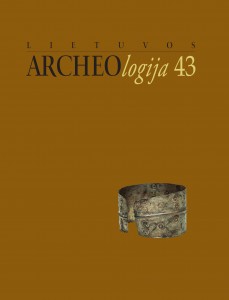Rubiķi cemetery in the context of the East Latvian and East Lithuanian barrows
Rubiķi cemetery in the context of the East Latvian and East Lithuanian barrows
Author(s): Elīna GuščikaSubject(s): Anthropology, Archaeology, Ancient World, 6th to 12th Centuries, Interwar Period (1920 - 1939), Present Times (2010 - today)
Published by: Lietuvos istorijos institutas
Keywords: Iron Age; burial practices; barrows; area of barrows with stone kerbs; territory of Sēlija;
Summary/Abstract: Rubiķi Cemetery (Jēkabpils District, Rubene Parish), which had 31 barrows, is providing important information about Iron Age burial practices in eastern Latvia and eastern Lithuania, especially those relating to barrows with stone kerbs and the territory later inhabited by the Selonians. The cemetery was investigated by Pēteris Stepiņš in 1937 and by Elīna Guščika and Mārtiņš Lūsēns in 2012. In all, seven barrows were excavated. Despite the extensive disturbance of the barrows and the fact that only fragmentary remains of burials were discovered in 1937, the data collected in the 2012 excavation have enabled a detailed analysis of the 2nd–7th and 11th–12th-century burial practices at Rubiķi. The article presents for the first time a complete description and analysis of the Rubiķi archaeological material (including AMS 14C dating), finishing with a discussion of some theoretical questions (burial site preconditions, burial practice continuity, etc.).
Journal: Lietuvos archeologija
- Issue Year: 2017
- Issue No: 43
- Page Range: 143-173
- Page Count: 31
- Language: English

